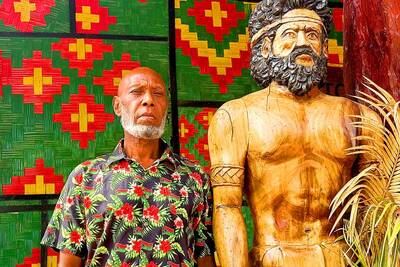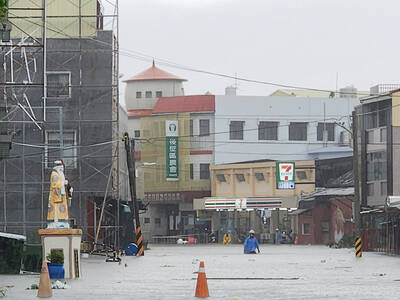India and China have the world's fastest-growing populations of millionaires, with a penchant for luxury travel, gems and designer clothes, a study released yesterday said.
The number of Indian millionaires jumped 22.7 percent last year to 123,000, followed by China where the number of high rollers rose 20.3 percent to 415,000, said the 12th annual World Wealth Report, prepared by US investment bank Merrill Lynch and information technology group Capgemini.
“In the Asia-Pacific region, wealth is being created at an unprecedented rate,” said Kong Eng Huat, South Asia market managing director at Merrill Lynch Global Wealth Management. “Notwithstanding the recent dislocation in global markets, the robust economies in Asia are increasingly being driven by the domestic consumption story and continue to spur wealth creation in the region.”
The report said China surpassed France as the world’s fifth-largest population of High Net Worth Individuals (HNWI), people with net assets of at least US$1 million excluding their primary residence.
Among the fastest-growing were South Korea, where the millionaire population rose by 18.9 percent to 118,000, and Indonesia, which saw a 16.8 percent rise to 23,000, the report said.
Singapore saw a 15.3 percent rise to 77,000 millionaires, it said.
Despite financial turmoil and increases in the price of luxury goods, the report said the world’s millionaires have an “unquenchable appetite” for luxury items.
Jewelry, gems and watches attracted the largest share of these “passion investment allocations” in Asia and the Middle East, it said.
Globally, these high-priced toys tend to be art collections, yachts, personal jets and similar items, Merrill Lynch and Capgemini said.
But there are still regional differences, they said.
Asia’s millionaires allocate the most to luxury and “experiential” travel, visits to high-end spas, and designer clothes.
With millionaires holding a significant portion of their wealth in stock markets, market capitalization performance is an important determinant of millionaire wealth generation, the report said.
Growth in traditional stock exchanges slowed last year but rose in several emerging market exchanges, particularly those in China and India, it said.
India’s millionaire growth was boosted by market capitalization expansion of 118 percent and real GDP growth of 7.9 percent, it said.
“Once recognized as a manufacturing superpower, characteristic of a more nascent market, much of India’s recent growth has been driven by the technology, financial services, property, construction and infrastructure sectors,” the Wealth Report said.
In China, GDP grew 11.4 percent last year and market capitalization rose by 291 percent but the country’s economy is still built on manufacturing, it said.
“This helps explain why its HNWI population growth is slower than that of India — and why the gap continues to widen between China’s richest citizens, a group with a particularly high concentration of wealth, and the middle-class,” the report said.
In third place behind India and China, Brazil had the third-fastest growth in millionaires, Merrill Lynch and Capgemini said.
Half of the 10 nations with the fastest-growing millionaire populations were in Asia.

The paramount chief of a volcanic island in Vanuatu yesterday said that he was “very impressed” by a UN court’s declaration that countries must tackle climate change. Vanuatu spearheaded the legal case at the International Court of Justice in The Hague, Netherlands, which on Wednesday ruled that countries have a duty to protect against the threat of a warming planet. “I’m very impressed,” George Bumseng, the top chief of the Pacific archipelago’s island of Ambrym, told reporters in the capital, Port Vila. “We have been waiting for this decision for a long time because we have been victims of this climate change for

Rainfall is expected to become more widespread and persistent across central and southern Taiwan over the next few days, with the effects of the weather patterns becoming most prominent between last night and tomorrow, the Central Weather Administration (CWA) said yesterday. Independent meteorologist Daniel Wu (吳德榮) said that based on the latest forecast models of the combination of a low-pressure system and southwesterly winds, rainfall and flooding are expected to continue in central and southern Taiwan from today to Sunday. The CWA also warned of flash floods, thunder and lightning, and strong gusts in these areas, as well as landslides and fallen

MASSIVE LOSS: If the next recall votes also fail, it would signal that the administration of President William Lai would continue to face strong resistance within the legislature The results of recall votes yesterday dealt a blow to the Democratic Progressive Party’s (DPP) efforts to overturn the opposition-controlled legislature, as all 24 Chinese Nationalist Party (KMT) lawmakers survived the recall bids. Backed by President William Lai’s (賴清德) DPP, civic groups led the recall drive, seeking to remove 31 out of 39 KMT lawmakers from the 113-seat legislature, in which the KMT and the Taiwan People’s Party (TPP) together hold a majority with 62 seats, while the DPP holds 51 seats. The scale of the recall elections was unprecedented, with another seven KMT lawmakers facing similar votes on Aug. 23. For a

All 24 lawmakers of the main opposition Chinese Nationalists Party (KMT) on Saturday survived historical nationwide recall elections, ensuring that the KMT along with Taiwan People’s Party (TPP) lawmakers will maintain opposition control of the legislature. Recall votes against all 24 KMT lawmakers as well as Hsinchu Mayor Ann Kao (高虹安) and KMT legislative caucus whip Fu Kun-chi (傅崐萁) failed to pass, according to Central Election Commission (CEC) figures. In only six of the 24 recall votes did the ballots cast in favor of the recall even meet the threshold of 25 percent of eligible voters needed for the recall to pass,